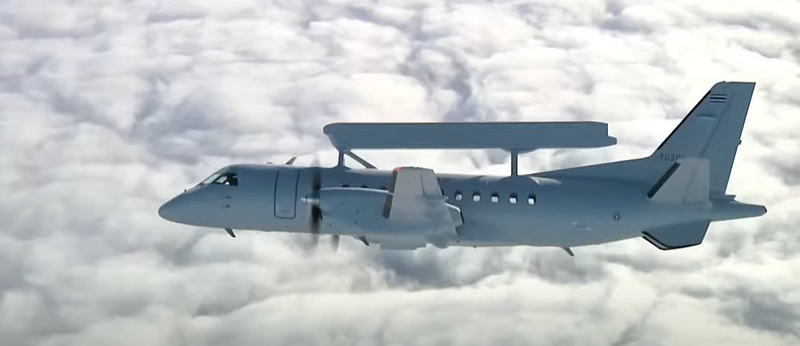Swedish Radar Plane Donation to Ukraine: A Strategic Game Changer

Bonjour à tous! Welcome to today’s post where we delve into the significant decision by Sweden to donate two radar planes to Ukraine. This move not only enhances Ukraine’s air defense capabilities but also symbolizes the deepening military support from Western nations. The planes, though of an older generation, introduce new operational capacities to the Ukrainian Air Force, which currently lacks airborne early warning systems. Let’s explore the details and implications of this strategic support.
Sweden’s Military Support to Ukraine
As of late May 2024, Sweden has significantly ramped up its military aid to Ukraine, culminating in a total contribution of approximately SEK 43.5 billion (around EUR 3.8 billion) since the onset of Russia’s invasion in February 2022. This aid encompasses a wide array of military equipment, from armored vehicles to advanced radar systems. Notably, the latest support package, which is Sweden’s largest to date, includes SEK 13.3 billion worth of military aid aimed at enhancing Ukraine’s air defense capabilities. This comprehensive package comprises advanced weaponry, surveillance systems, and support for strategic defense operations.
In addition to direct military aid, Sweden has also established a three-year framework for continued support to Ukraine, totaling SEK 75 billion (around EUR 6.5 billion) for the period 2024–2026. This framework ensures a sustained and structured provision of aid, reflecting Sweden’s commitment to Ukraine’s long-term defense and stability.
The ASC 890 Radar Planes
The ASC 890 radar planes, part of Sweden’s military support to Ukraine, are modified Saab 340 aircraft equipped with PS-890 Erieye radar systems. These aircraft offer significant, albeit limited, airborne surveillance capabilities. Unlike more advanced AWACS systems, which provide 360-degree radar coverage, the ASC 890’s radar covers a 120-degree sector, allowing it to detect threats to its sides but not directly in front or behind. Despite this limitation, the ASC 890’s radar range of approximately 400 km represents a substantial upgrade for Ukraine, providing crucial situational awareness over large areas.
This capability is particularly beneficial for detecting and tracking enemy aircraft and missile threats, thereby enhancing the coordination and effectiveness of Ukraine’s air defenses. The inclusion of such advanced systems in Sweden’s aid package demonstrates the strategic importance of bolstering Ukraine’s aerial surveillance and defense infrastructure amidst ongoing conflict.
Training and Integration Challenges
Introducing sophisticated technology like the ASC 890 into Ukraine’s military arsenal presents significant challenges. The operation of the ASC 890 requires specialized training for radar operators and pilots due to the complexity of airborne surveillance and control operations, which is considerably higher than that of ground-based systems. Sweden has committed to supporting Ukraine through comprehensive training initiatives, ensuring that Ukrainian personnel can effectively utilize these advanced assets. This training is crucial, as it includes mastering the complex integration of airborne radar systems and understanding the interoperability with other military technologies.
Furthermore, the integration of these planes into Ukraine’s existing defense network will demand substantial coordination. This involves aligning the new radar capabilities with current ground-based systems and ensuring compatibility with other NATO-standard equipment, such as the anticipated F-16 fighter jets. The challenge is not just operational but also involves significant logistical planning to synchronize various defense elements into a cohesive operational framework.
Strategic Implications
The deployment of the ASC 890 radar planes marks a strategic enhancement for Ukraine. These aircraft significantly boost Ukraine’s capability to monitor airspace more effectively, providing early warnings of incoming threats and enabling better coordination of defensive responses. This is especially crucial given the persistent threat from Russian missile strikes and air incursions. The ASC 890’s advanced radar systems will enhance situational awareness, which is vital for preemptive defensive measures.
Additionally, the radar planes can support coordinated strike missions by offering guidance and protection to Ukrainian attack aircraft. This tactical advantage can mitigate the risks posed by Russian air defenses and improve the success rate of Ukrainian offensive operations. The integration of the ASC 890 into Ukraine’s air defense strategy is expected to significantly enhance the country’s overall military effectiveness.
Conclusion
Sweden’s decision to donate ASC 890 radar planes to Ukraine represents a noteworthy development in the ongoing conflict with Russia. Although these planes are not the latest in technology, they provide a substantial boost to Ukraine’s air defense capabilities. This move underscores the commitment of Western nations to support Ukraine’s defense efforts and enhance its operational capabilities. As Ukraine integrates these new assets, the effectiveness of its military operations is expected to improve, contributing to a more resilient defense against ongoing aggressions. The commitment to providing training and ensuring interoperability with existing and incoming defense systems, like the F-16 fighter jets, highlights the comprehensive approach being taken to bolster Ukraine’s defensive and offensive capabilities.

Comments
Post a Comment